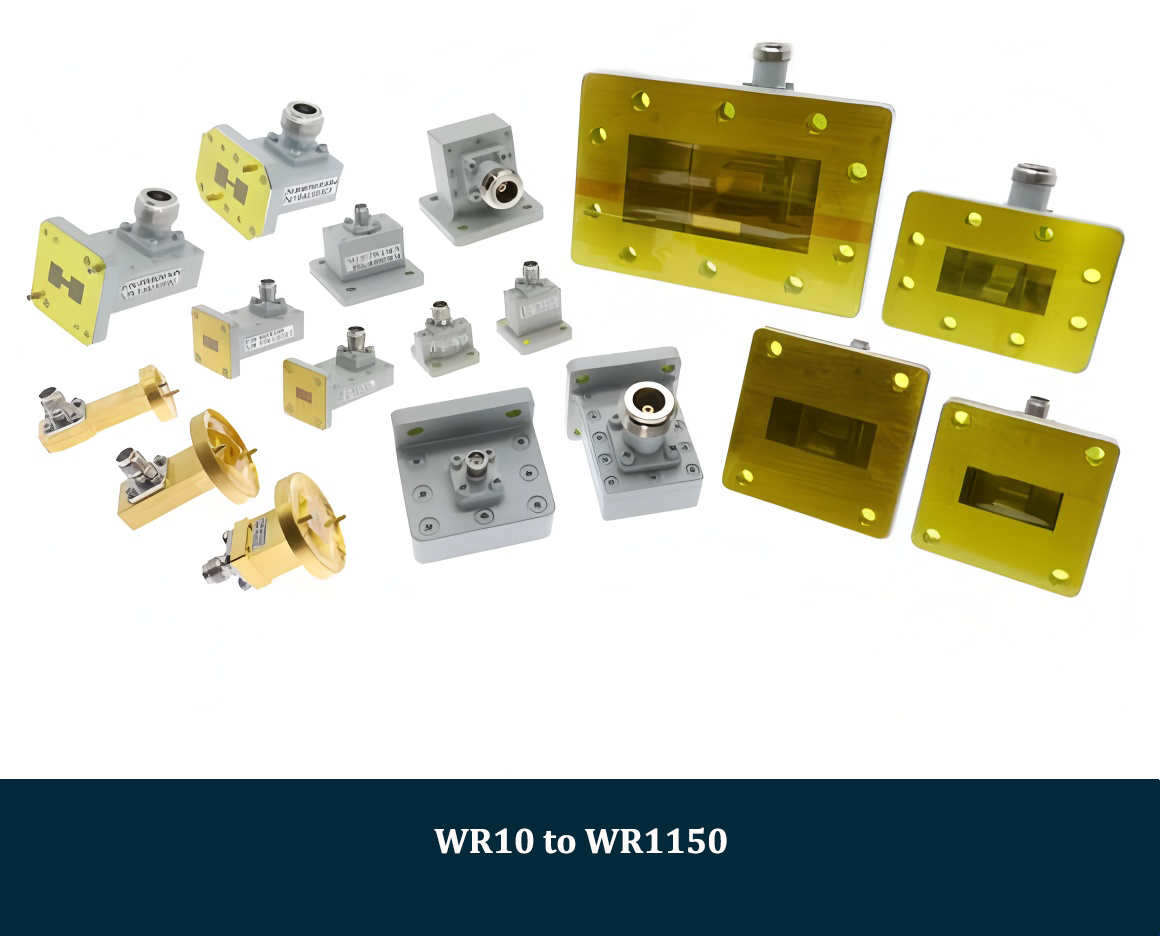Waveguide-to-Coaxial adapters are core interface components indispensable in the "metrology-system-field" link across the mmWave band (30–300 GHz). Their applications can be summarized in the following six scenarios:
1. mmWave Testing and Metrology
• VNA/Spectrum Analyzer Extension: Converts 1 mm (110 GHz), 0.8 mm (145 GHz), or waveguide flange (WR-10/WR-6/WR-5) ports to coaxial, enabling rapid interconnection of power probes, calibration components, and amplifiers;
• National mmWave Power/VSWR Standard Device: Serves as a "reference interface" for metrological value transfer, requiring VSWR ≤ 1.05.
2. 5G/6G and Commercial Wireless
• mmWave small cell (28/39/60 GHz) OTA testing: Coaxial interface connects to baseband/IF, waveguide port connects to antenna anechoic chamber probe;
• WiGig (802.11ay 60 GHz) terminal pre-research: Chip-antenna cascade debugging completed using waveguide-coaxial converter.
3. Satellite and Aerospace
• LEO ground station Ka/V band (40–67 GHz) uplink/downlink: Converter transfers waveguide feed output to coaxial power amplifier;
• Inter-satellite link payload: Onboard waveguide network → coaxial cable → T/R assembly, weight and insertion loss must be <0.2 dB.
4. Radar and Electronic Countermeasures
• mmWave fire control/imaging radar (94 GHz) field maintenance: Quickly disconnect the waveguide for easy power spectrum measurement with coaxial instruments;
• Electronic countermeasures range: High-power pulse (>200 W) waveguide output → coaxial attenuator/limiter to protect the back-end receiver.
5. Automotive Radar and Traffic Sensors
• 77 GHz FMCW radar production line: Waveguide port aligns with antenna anechoic chamber, coaxial port connects to signal source for automated calibration;
• Roadside mmWave traffic sensor: Waveguide antenna → coaxial feeder → roadside cabinet, requiring IP67 and temperature range of -40~+85 °C.
6. Scientific Research and Education
• Terahertz Transition Band (67–110 GHz) Front-End Development: Utilizing waveguide-coaxial converters to complete the three-stage power cascading of chip, package, and antenna;
• University mmWave Teaching Experiments: Low-cost aluminum converters allow students to quickly build 40-60 GHz transceiver links.

Summary:
The waveguide-coaxial converter is the universal adapter in the mmWave field, serving as a "metrology standard, system debugging, and field maintenance" tool—from 110 GHz metrology standards to 77 GHz automotive radar production lines, and even 94 GHz radar test ranges, it is indispensable wherever a "rectangular waveguide" needs to be connected to a "coaxial cable."


